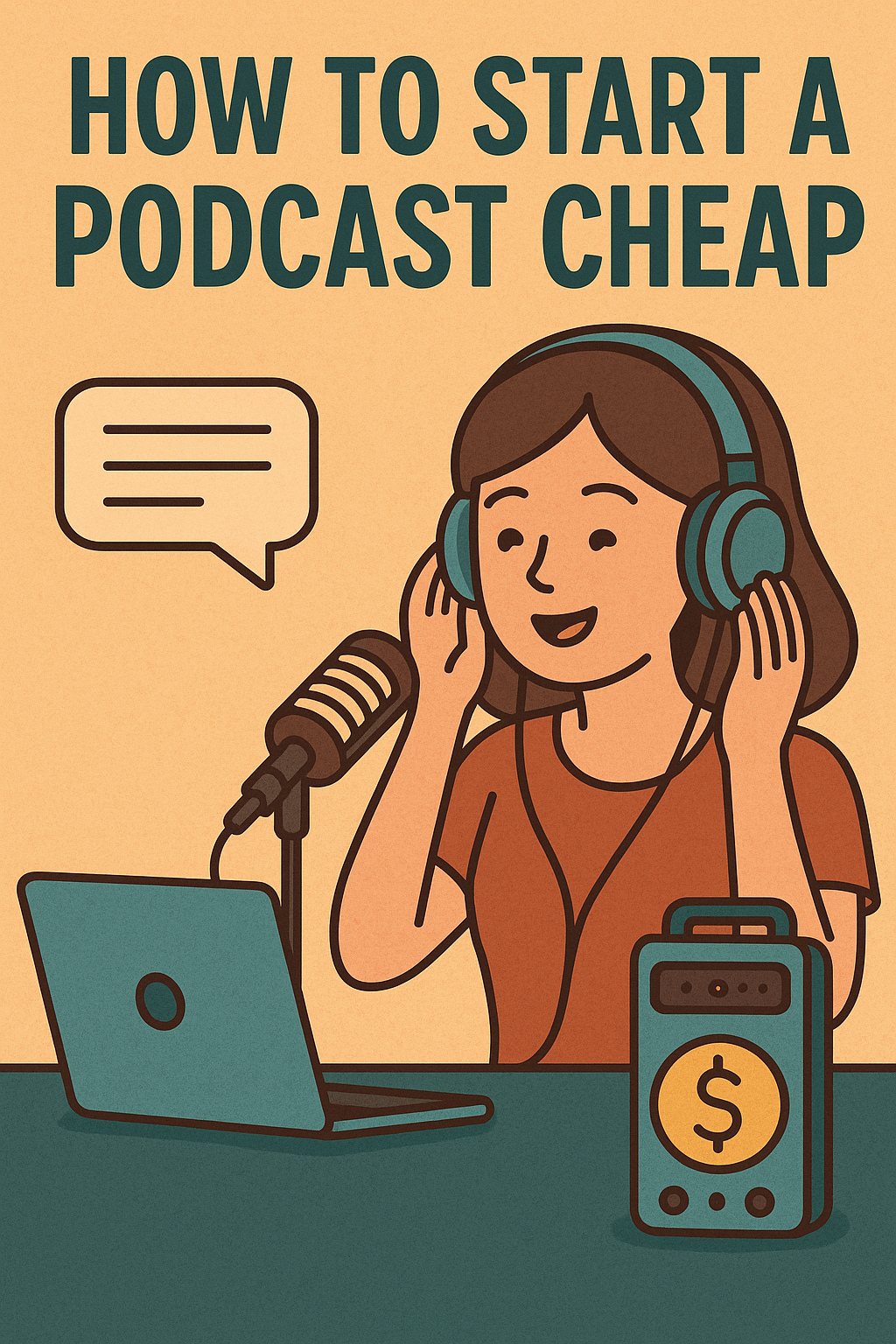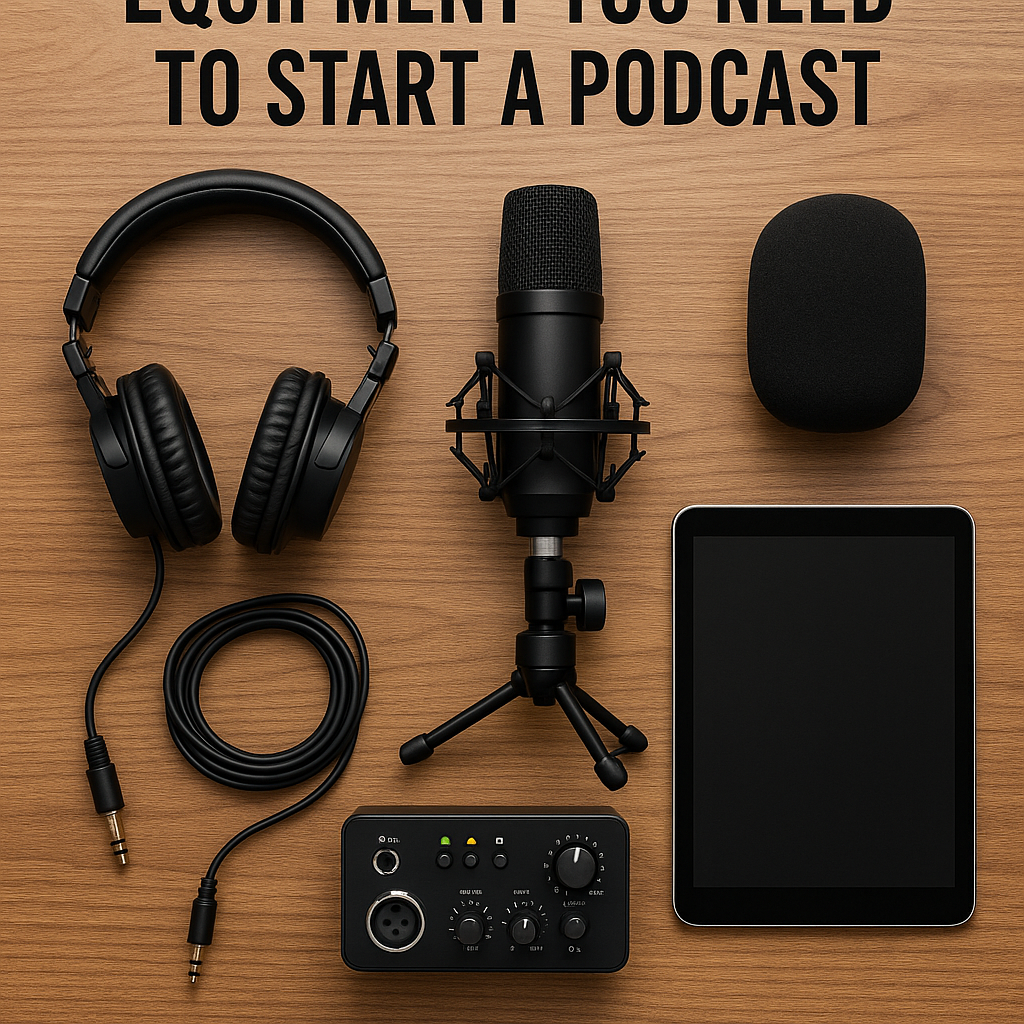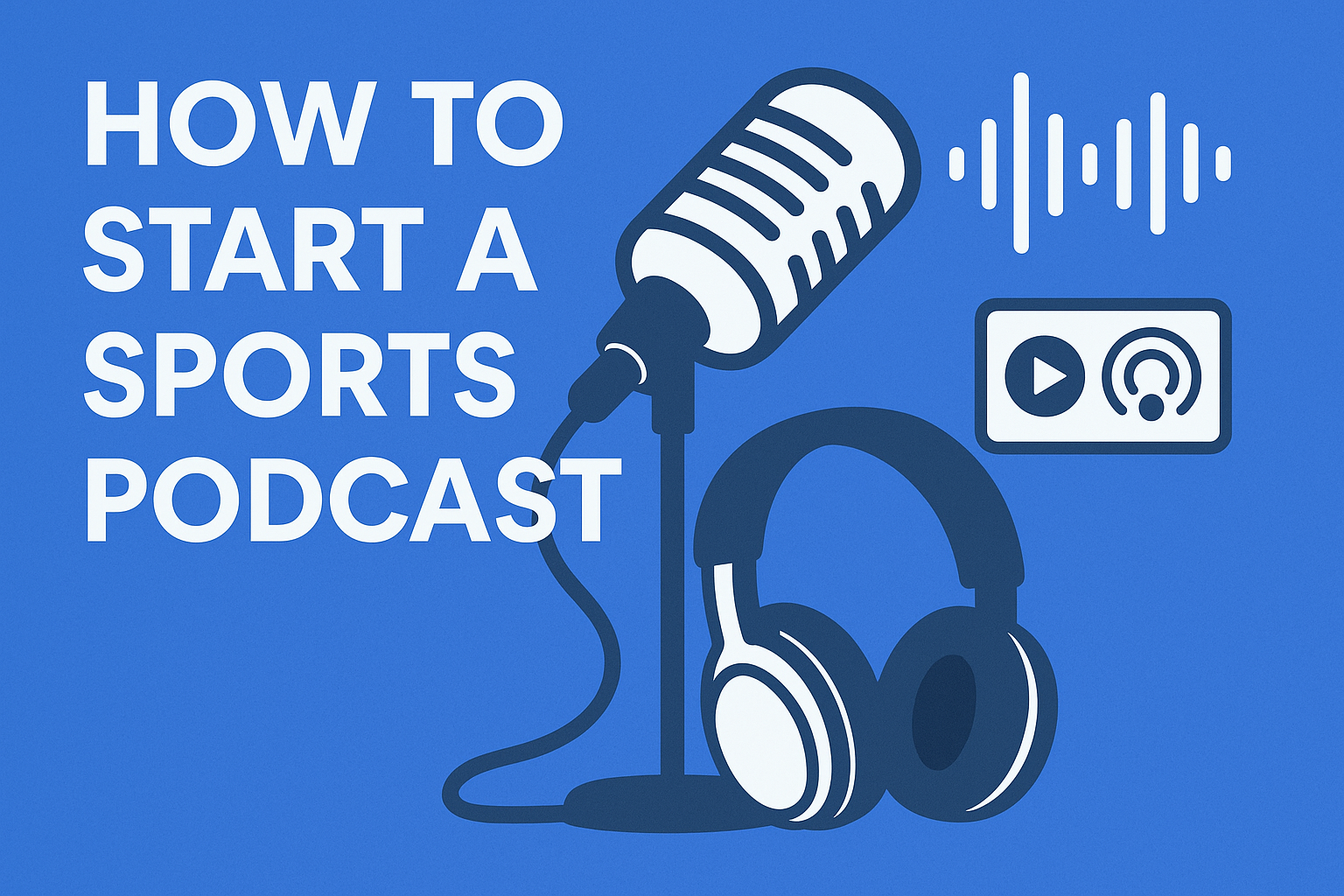How to Start a Podcast Cheap - Complete Budget Guide 2025
Learn how to start a podcast cheap with our complete budget guide. Discover affordable equipment, free tools, and DIY solutions to launch your podcast for under $100.

How to Start a Podcast Cheap: The Complete Budget Guide (2025)
Think you need thousands of dollars to start a podcast? Think again. With the right approach, you can launch a professional-sounding podcast for less than the cost of a nice dinner out.
The biggest misconception new podcasters have is that expensive equipment equals better quality. In reality, technique, consistency, and content matter far more than having the latest gear. This guide will show you exactly how to start a podcast cheap without sacrificing audio quality or professionalism.
We'll break down the absolute minimum equipment needed, share DIY solutions that cost pennies, and provide step-by-step budget setups from $50 to $200 that will have you podcasting like a pro.
The Ultra-Budget Podcast Setup (Under $50)
Yes, you can literally start a podcast for under $50. Here's how:
The Smartphone Setup ($0-30 Total)
What You Need:
- Smartphone (you already own this)
- Free recording app: Anchor, Voice Memos (iPhone), or Voice Recorder (Android)
- Earbuds with microphone ($15-30 for decent quality)
- Quiet room (free but crucial)
How to Make It Work:
- Use your phone's built-in microphone or earbuds for better quality
- Record in your closet (clothes provide natural sound dampening)
- Edit with free apps like Anchor's built-in editor
- Upload directly to podcast platforms through free hosting services
Real Talk: This setup can actually sound quite good if you nail the recording environment and speak clearly into the microphone.
The Computer Microphone Setup ($30-50 Total)
What You Need:
- Basic USB microphone: Behringer C-1U ($30) or similar
- Free editing software: Audacity or GarageBand (Mac)
- Free podcast hosting: Anchor or Spotify for Podcasters
Upgrade Tips:
- Record in a small, carpeted room for better acoustics
- Use blankets or towels to create a makeshift vocal booth
- Maintain consistent distance from the microphone (6-8 inches)
The Sweet Spot Budget Setup ($75-150)
This range gives you significantly better quality while staying incredibly affordable.
The "Bedroom Podcaster" Kit ($75-100)
Equipment List:
- Samson Go Mic ($40) - Surprisingly good USB microphone
- Basic closed-back headphones ($25-35) - Essential for monitoring
- Boom arm ($15-25) - Keeps microphone positioned correctly
- Pop filter ($10) - Reduces harsh "P" and "B" sounds
Total: $90-110
Why This Works:
- The Samson Go Mic punches way above its weight class
- Proper positioning with boom arm makes any microphone sound better
- Headphones let you catch problems during recording, not after
The "Smart Beginner" Kit ($125-150)
Equipment List:
- Audio-Technica ATR2100x-USB ($79) - Best value microphone available
- Sony MDR-7506 headphones ($100) - Industry standard monitoring
- InnoGear boom arm ($25) - Solid budget boom arm
- Aokeo pop filter ($10) - Effective and cheap
Total: $214 (okay, slightly over $150, but worth it)
Why This Is the Sweet Spot:
- The ATR2100x works with both USB and XLR (future-proofing)
- Professional-grade headphones that will last years
- This setup can handle guest interviews with additional microphones later
Free Software That Actually Works
Don't spend money on software when these free options are genuinely excellent:
Recording Software
- Audacity: The gold standard for free audio editing
- GarageBand: Mac users get a surprisingly powerful tool
- Anchor: Record directly in your browser, includes hosting
Advanced Free Options
- Reaper: 60-day free trial, then only $60 (not subscription)
- DaVinci Resolve: Professional video editor with excellent audio tools
- Hindenburg Narrator: Free version perfect for voice content
DIY Solutions That Save Hundreds
Acoustic Treatment (Professional Cost: $300-500 / DIY Cost: $20-50)
Moving Blanket Vocal Booth:
- Hang moving blankets around your recording area ($40 for 4 blankets)
- Create a "fort" with chairs and blankets for isolation
- Record in your closet with clothes acting as sound absorption
Towel and Pillow Method:
- Surround yourself with pillows while recording
- Drape towels over hard surfaces near your microphone
- Record on your bed with comforters creating natural dampening
Shock Mount Alternative ($3 instead of $30)
- Rubber bands: Attach your microphone to boom arm with thick rubber bands
- Hair ties: Heavy-duty hair ties work surprisingly well
- Foam padding: Wrap foam around connection points to reduce vibration
Pop Filter DIY ($2 instead of $15)
- Embroidery hoop + pantyhose: Classic DIY pop filter that actually works
- Wire coat hanger + sock: Bend hanger into circle, stretch sock over it
- Even cheaper: Just maintain proper microphone distance (works 80% as well)
The $200 "Semi-Professional" Setup
If you can stretch your budget to $200, you get dramatically better results:
The Complete Kit:
- Samson Q2U microphone ($69) - Dynamic mic that works in any room
- Focusrite Scarlett Solo ($130) - Professional audio interface
- Audio-Technica ATH-M40x ($99) - Excellent closed-back headphones
- Boom arm and pop filter ($35) - InnoGear package deal
Total: $333 (I know, over $200, but this is the "no regrets" setup)
Why This Changes Everything:
- Dynamic microphone rejects background noise naturally
- Professional audio interface gives you real preamp quality
- This setup handles guests, phone interviews, and future expansion
Money-Saving Shopping Strategies
Best Times to Buy
- Black Friday/Cyber Monday: 20-40% off most audio equipment
- Back-to-school season: August-September sales on electronics
- End of year: December clearance sales
Where to Find Deals
- Used equipment: Reverb, eBay, Facebook Marketplace (buy from musicians)
- Open box deals: Best Buy, Guitar Center returns at discount
- Bundle deals: Amazon often bundles microphone + accessories for less
What to Buy Used vs. New
Safe to Buy Used:
- Microphones (they're built to last)
- Audio interfaces (simple technology)
- Boom arms and stands
Buy New:
- Headphones (hygiene and wear)
- Cables (cheap anyway)
- Pop filters (also hygiene)
Free Podcast Hosting and Distribution
Don't pay for hosting when you're starting cheap:
Completely Free Options
- Anchor/Spotify for Podcasters: Unlimited hosting, automatic distribution
- Google Podcasts Manager: Free hosting with Google integration
- Archive.org: Unlimited storage for podcast files
Freemium Options (Free to Start)
- Buzzsprout: 2 hours/month free, then $12/month
- Captivate: 7-day free trial, unlimited bandwidth
- RedCircle: Free with ads, paid plans remove ads
Common Mistakes That Waste Money
Overspending on the Wrong Things
- Expensive condenser microphones: Great for studios, terrible for untreated rooms
- USB microphones for multiple guests: They don't play well together
- Too many accessories: Start simple, add as needed
Underinvesting Where It Matters
- Headphones: You can't fix what you can't hear
- Acoustic treatment: Free/cheap solutions work great
- Consistent recording schedule: Equipment means nothing without content
The "Upgrade Path" Strategy
Start cheap and upgrade strategically:
Month 1-3: Prove the Concept
- Use smartphone or basic USB microphone
- Focus on content and consistency
- Learn editing basics with free software
Month 4-6: First Real Upgrade
- Invest in proper microphone (Samson Q2U or ATR2100x)
- Add basic acoustic treatment
- Improve recording technique
Month 7-12: Semi-Professional Setup
- Add audio interface if using XLR microphone
- Upgrade headphones for better monitoring
- Consider paid editing software if needed
Advanced Budget Hacks
The "Borrow and Try" Method
- Borrow equipment from friends/family before buying
- Rent expensive items for special episodes
- Test different microphones at music stores before purchasing
The "Start with One, Add Later" Approach
- Begin with one quality microphone instead of cheap multiples
- Add guest equipment only when you regularly have guests
- Upgrade in order of importance: microphone → headphones → interface → acoustics
The "Community Approach"
- Share equipment with other local podcasters
- Group purchases for bulk discounts
- Equipment swaps when upgrading
Content Creation on a Budget
Free Music and Sound Effects
- Freesound.org: Thousands of free sound effects
- YouTube Audio Library: Free music for content creators
- Incompetech: Kevin MacLeod's royalty-free music
Free Marketing Tools
- Canva: Free podcast artwork and social media graphics
- Headliner: Free audiogram creation for social media
- Buffer: Free social media scheduling
Maximizing Your Cheap Setup
Recording Technique Tips
- Consistent microphone distance: 6-8 inches, always
- Speak across the microphone, not directly into it
- Use hand gestures while talking (improves energy)
- Record room tone (30 seconds of silence) for editing
Editing Efficiency
- Learn keyboard shortcuts in your chosen software
- Create templates with your standard settings
- Batch similar tasks (all cutting, then all level adjustment)
- Keep raw files until you're happy with the final product
DIY Promotional Materials
- Record video versions using smartphone for YouTube/social
- Create quote graphics from episode highlights
- Write blog posts expanding on episode topics
- Repurpose content into newsletters and social posts
When to Invest More Money
Upgrade your budget when you hit these milestones:
Revenue Milestones
- $100/month: Upgrade to $300-400 setup
- $500/month: Invest in $800-1000 professional setup
- $1000+/month: Sky's the limit, buy what you want
Audience Milestones
- 1,000 downloads/month: Justify better equipment
- 5,000 downloads/month: Consider professional-level gear
- Regular guests: Invest in multi-microphone setup
Quality Indicators
- Consistent content creation (12+ episodes)
- Growing audience engagement (reviews, comments, emails)
- Clear podcast goals (monetization, brand building, etc.)
Free Resources to Learn More
YouTube Channels
- Podcast Movement: Free equipment reviews and tutorials
- The Podcast Host: Technical tutorials and comparisons
- Podcastage: Detailed microphone reviews and tests
Free Courses
- Anchor's Podcast Academy: Comprehensive free course
- Google Digital Garage: Podcast marketing courses
- YouTube Creator Academy: Content creation fundamentals
Communities
- Reddit r/podcasting: Active community with equipment advice
- Facebook podcasting groups: Local and topic-specific communities
- Discord servers: Real-time chat with other podcasters
The Reality Check
Starting a podcast cheap absolutely works, but remember:
What Cheap Equipment CAN Do:
- Produce professional-sounding audio with proper technique
- Handle solo shows and simple interviews perfectly
- Last for years with basic care
- Grow your skills and audience effectively
What Cheap Equipment CAN'T Do:
- Automatically make you sound professional (technique matters)
- Fix a bad recording environment (acoustics are crucial)
- Replace consistency and good content
- Handle complex multi-guest setups easily
Your 30-Day Cheap Podcast Launch Plan
Week 1: Planning and Setup ($0)
- Choose your podcast topic and format
- Plan your first 5 episodes
- Test record with current equipment (smartphone, computer mic)
- Research your specific equipment needs
Week 2: Equipment Purchase ($50-150)
- Buy your chosen microphone setup
- Create DIY acoustic treatment
- Download and learn free editing software
- Set up your recording space
Week 3: Practice and Refinement ($0)
- Record practice episodes daily
- Learn basic editing techniques
- Test different recording environments
- Get feedback from friends/family
Week 4: Launch ($0)
- Record your first official episode
- Edit and upload to free hosting platform
- Submit to Apple Podcasts, Spotify, Google Podcasts
- Share on social media and with your network
The Bottom Line on Cheap Podcasting
You can absolutely start a podcast cheap and create professional-quality content. The key is understanding that technique, consistency, and content matter infinitely more than expensive equipment.
Start with what you can afford, focus on creating valuable content for your audience, and upgrade strategically as your podcast grows. Many successful podcasters started with nothing more than a smartphone and free software.
The most expensive equipment you'll ever buy is the commitment to show up consistently and serve your audience with valuable content. Everything else is just tools to help you do that more effectively.
Remember: The best podcast equipment is the equipment you actually use to create content. Start cheap, start now, and upgrade as you grow.
Ready to turn your budget podcast episodes into multiple content formats? Our Podcast to Newsletter Generator helps you maximize the value of every episode by automatically converting your audio content into engaging newsletters, blog posts, and social media content. Start your free trial →
Frequently Asked Questions
Q: Can I really start a professional-sounding podcast for under $100? A: Absolutely. The Samson Q2U microphone ($69) with basic headphones and free software can produce broadcast-quality results when used correctly. Your recording technique and environment matter more than expensive gear.
Q: What's the absolute minimum I need to spend to start podcasting? A: $0 to $30. You can use a smartphone with earbuds and free apps like Anchor. While not ideal for long-term podcasting, it's perfect for testing your content idea and building initial episodes.
Q: Should I buy used equipment to save money? A: Yes, for certain items. Microphones and audio interfaces are safe used purchases from reputable sellers. Avoid used headphones (hygiene) and cables (they're cheap new anyway).
Q: How much money should I make before upgrading my cheap setup? A: Consider upgrading when you're earning $100-200 per month from your podcast or consistently hitting 1,000+ downloads monthly. This indicates sustainable growth that justifies better equipment investment.
Q: What's the biggest mistake cheap podcast setups make? A: Ignoring acoustics. A $50 microphone in a good acoustic environment (like a closet full of clothes) will sound better than a $500 microphone in an empty, echo-filled room. Focus on your recording space first.
Ready to start your podcast cheap and turn episodes into multiple revenue streams? Download our free "Cheap Podcast Startup Checklist" with specific product links, DIY acoustic treatment guides, and step-by-step setup instructions that have helped 1,000+ podcasters launch for under $150.
Related Articles

Equipment You Need to Start a Podcast - Complete Beginner's Guide 2025
The Complete Guide to Equipment You Need to Start a Podcast (2025) Starting a podcast can feel overwhelming when you're staring at endless lists of equipment recommendations and conflicting advice about what gear you actually need. The truth? You don't need to break the bank to create...

How to Start a Sports Podcast: Complete Guide for 2025 (Free Equipment List)
How to Start a Sports Podcast: The Complete Beginner's Guide for 2025 Sports podcasting has exploded into a billion-dollar industry, with successful shows earning millions while providing fans with deeper analysis, insider access, and passionate discussions about their favorite teams and athletes....
Ready to Transform Your Podcast?
Convert your podcast episodes into engaging newsletters that grow your audience and increase engagement.
Get Started Free